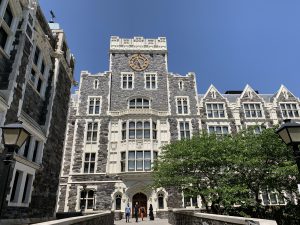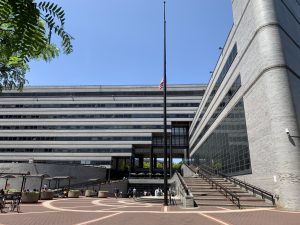
The CUNY School of Medicine, only two years into its history, has achieved a stunning accomplishment. The school leads the nation as the most racially diverse medical school in the country, with 53 percent of students being members of minority groups.
The diversity is undoubtedly linked to the school’s revolutionary acceptance policy, which eschews MCATs in place of a more holistic application process. Students are selected out of high school, and their acceptance is determined by a number of qualifiers. These include essay samples, interviews with students, and an investigation into the student’s extracurricular life. According to Annabel Santana, the school’s assistant dean of diversity and educational affairs, the applicants are considered by “not only the schools they come from, but their communities.” The admissions office takes into account the students’ socioeconomic status as well as their high school performance, internship experience and their level of engagement with their communities.
The school, located in Harlem on the City College of New York campus, was established in 2016 after CUNY absorbed what was established in 1943 as the Sophie Davis School of Biomedical Engineering. CUNY carried on the tradition put in place by the Davis school of providing high school graduates with an all-inclusive six-year medical degree rather than the tiered system employed by most colleges. The school has a student body of 400, and a highly competitive acceptance rate of 7 percent. In some cases, recruitment begins as early as middle school.

Representatives of the school reach out to high school students in various ways. Santana believes that “the earlier you can connect to young people and say, ‘hey this is a career you can pursue,’” the better.
Once accepted, the students have access to a number of programs put in place to make them feel safe, seen and heard. “We try to be much more supportive of our students in ways beyond the academic, and it has been highly effective in reducing our attrition rates,” Santana said. These support systems include programs like White Coats for Black Lives, a nationally active, student–run organization that works to eradicate racism in medical schools; or Sisters for Sophie, a collection of African American women acting as advisors and mentors. According to Santana, the staff at the college is very diverse, which “helps students to see that they have mentors and role models with similar backgrounds to their own.”
According to a press release by CUNY, The diversity level at CUNY School of Medicine is nearly the inverse of national statistics, which see a white medical student population of about 59 percent on average. The population of black students at the college is 35 percent, nearly five times the national medical school average of 6 percent. The school also enrolls women at a markedly higher rate than the rest of the country, with 63 percent of its student body being comprised of women, which is the highest percentage in the nation among medical schools. The community outreach and social considerations have led to 80 percent of the school’s student body being either immigrants or first generation citizens.
The non-traditional six-year plan helped facilitate the elimination of the MCAT. “Because we’re recruiting directly from high school, we didn’t see it as adding value to process,” Santana said. “We thought it might be less informative because the MCATs have been shown to be more of a barrier to get into medical school because it’s more a measure of knowledge and ability to take standardized exams.”
According to Santana, a feeling of acceptance and inclusivity is tantamount to keeping students happy and comfortable at the college. She says that the administration works to “identify needs early on and get advisors involved. We make sure students know they have people they can reach out to.” All staff members are subject to implicit bias training, a class that helps faculty recognize their inherent biases and work to acknowledge and eliminate them when dealing with students.
All of this has led to the success of the most diverse medical school in the nation. Retention and graduation rates are high, and Santana believes that the students “are very supportive of each other. They really develop a sense of community.” This community serves as an important augmentation to the myriad communities from which the students hail, making them feel welcome among peers from all backgrounds, Santana said. “We give our students an opportunity to demonstrate that they have a lot of experience to bring to the table.”

